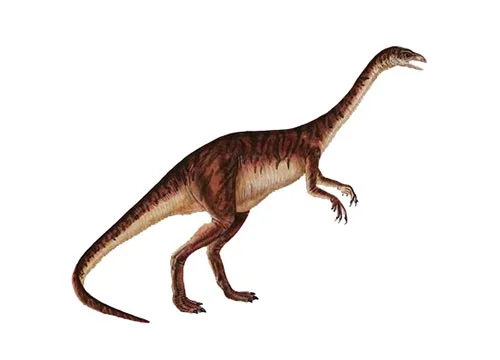Anchisaurus (Near lizard)

An-chih-sore-us
Othniel Charles Marsh - 1885
Herbivore
Estimated 2-4 meters long
Sauropod
A. polyzelus (type)
USA
Early Jurassic, 190 million years ago
Anchisaurus Facts
Anchisaurus is a genus of basal sauropodomorphs that was alive during its Early Jurassic Period and its fossils were discovered in the red sandstones of the Portland Formation in the northeastern United States. It was created to replace “Amphisaurus”, which was an alternative term for the film of Hitchcock “Megadactylus”.
In 1855, the first kind specimen of Anchisaurus polyzelus AM 41/109 was discovered in Amherst College Museum of Natural History, but it was damaged by blasting and most pieces of bones were accidentally thrown away by construction workers or saved by curious people.
In the end, these dinosaurs were discovered from the remains of a few fragments. Edward Hitchcock Jr., son of Ichnologist Edward Hitchcock, wrote about the Springfield remains as a supplement to his father’s research on fossil footprints.
Richard Owen suggested naming the discoveries Megadactylus as the name “large finger” in Greek, while Hitchcock Jr. chose polyzelus “much sought for” in Greek. In 1877, the professor Othniel Charles Marsh discovered that the name was also in the spotlight, and in 1885, an Athracosaurian Amphisaurus Barkas 1870 was replaced with Anchisaurus.
The most well-known species of Anchisaurus is Hitchcock’s A. colurus, which was found at Manchester, Connecticut in 1884 and is believed to be closely related to Anchisaurus polyzelus. It is the most complete specimen type of A.
polyzelus and is the Neotype of the genus. Marsh established Anchisaurus major as a distinct genus, Ammosaurus, and designated YPM 1883/YPM 40313 as the brand new species within Anchisaurus, Anchisaurus colurus, “the mangled one”. It was used as templates of which O.C. Marsh rebuilt the skeleton in 1893 and was restored in 1893. Broom and Galton named Gyposaurus capensis and Anchisaurus capensis respectively, but it has since been classified as a young Massospondylus carinatus.
Scientists have discovered prosauropods from the McCoy Brook Formation in Nova Scotia, which dates back to early in the Early Jurassic Hettangian stage. Anchisaurus was a small dinosaur with an average length of 2 meters (6.6 feet) and weighed between 27 and 27 kilograms (60 lbs). Marsh’s type A. major (also called Ammosaurus) was much larger, ranging in the range of



